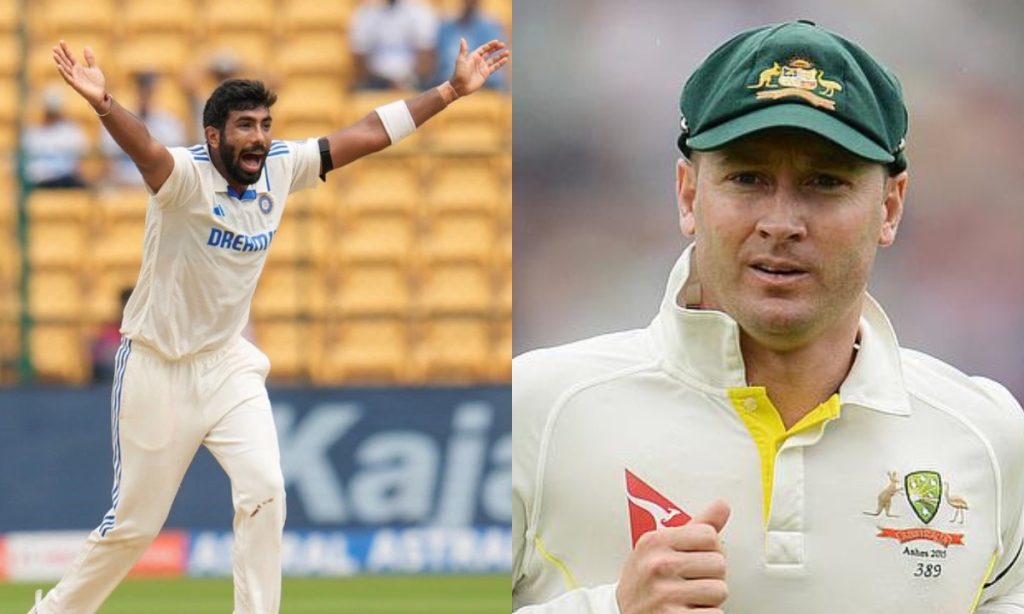The game of cricket has seen its fair share of debates regarding who constitutes the greatest players in its history. Michael Clarke, a former Australian Test captain with a keen eye for the sport, has recently entered this debate by revealing his all-time Test XI. This selection, rich with cricketing legends, however, notably omits Jasprit Bumrah, a current star whose unique bowling action and effectiveness have made him a standout figure in modern cricket.
The Selection
Clarke’s chosen squad begins with the dynamic duo of openers Michael Slater and Matthew Hayden. Slater, with his aggressive starts, and Hayden, with his monumental run-scoring, set the tone for what Clarke envisions as an unbeatable batting line-up. The middle order is nothing short of iconic, featuring Ricky Ponting, Sachin Tendulkar, Brian Lara, and Jacques Kallis. Ponting’s leadership and batting stats, Tendulkar’s unparalleled record, Lara’s flair, and Kallis’s all-round capabilities make this quartet one of the most formidable in cricket history.
Adam Gilchrist, known for revolutionizing the role of the wicket-keeper with his aggressive batting, slots into the team as the keeper. His ability to change the game’s momentum with the bat is unmatched, despite his occasionally flamboyant glovework.
The bowling attack is where Clarke has decided to put his might. Mitchell Johnson, with his pace and swing, alongside Dale Steyn, whose mastery over the new ball is legendary, form a terrifying new-ball partnership. Glenn McGrath, the metronome, ensures there’s no respite for the batsmen with his relentless accuracy. Shane Warne, the magician with the ball, brings his leg-spin wizardry, and Muttiah Muralitharan, the highest wicket-taker in Test cricket, adds his off-spin mystery to the mix.
No Place for Jasprit Bumrah
The exclusion of Jasprit Bumrah from this XI is particularly surprising given his impact on the game. Bumrah has been a revelation with his unusual action, deceptive pace, and ability to bowl in any phase of the game. He’s not just a wicket-taker but also someone who can control the game’s tempo with his variations. His record in Test cricket, including crucial performances against top teams like Australia and England, would argue for his inclusion in any modern all-time XI. His 32 wickets in the Border-Gavaskar Trophy 2024/25 where he single handedly toyed with Australian batters.
Clarke’s decision might be influenced by several factors. Firstly, there’s the historical context; Clarke was part of or witnessed the careers of many in his XI firsthand, giving them a personal edge in his eyes. Bumrah, while already a legend in the making, might not have the same historical resonance for Clarke as those who have long since retired or whose careers overlapped significantly with his own.
Secondly, Clarke’s choices might reflect a preference for bowlers who had a prolonged impact over those who are still in the process of building their legacy. McGrath, Steyn, Johnson, Warne, and Muralitharan have all had careers that have shaped cricket for generations, whereas Bumrah, despite his excellence, is still adding to his story.
Another aspect could be the balance of the team. Clarke’s XI includes two spinners, which might suggest a strategy leaning towards conditions that favor spin or the importance he places on diversity in bowling. In this context, selecting another fast bowler like Bumrah might have been seen as creating an imbalance or redundancy, especially with Johnson and Steyn already in the lineup.
The Implications of Clarke’s XI
Clarke’s selection isn’t just about picking players but also about crafting a team narrative that reflects his understanding of cricket. His XI is not just about statistics but about the impact players had on matches, series, and the evolution of the game itself. It’s a blend of aggression, consistency, innovation, and mastery over different aspects of cricket.
Bumrah’s exclusion, therefore, while contentious, serves as a reminder of how cricket’s history is often a blend of personal experiences, historical reverence, and strategic team composition. It also fuels the ongoing debate about how we measure greatness in cricket – is it through sheer numbers, the era in which one played, or the unique contributions to the game?
In Summary
Michael Clarke’s all-time Test XI is a homage to the players who have left an indelible mark on cricket through their skills, performances, and influence on the game’s strategy and spirit. The absence of Jasprit Bumrah in this lineup opens up discussions on the criteria for greatness in cricket. Does it require a complete career to be fully appreciated, or can current stars with significant achievements already under their belt claim a spot? Clarke’s team, while a personal choice, contributes to the rich tapestry of cricketing discussions, where every selection or omission tells a story of the sport’s past, present, and future.

